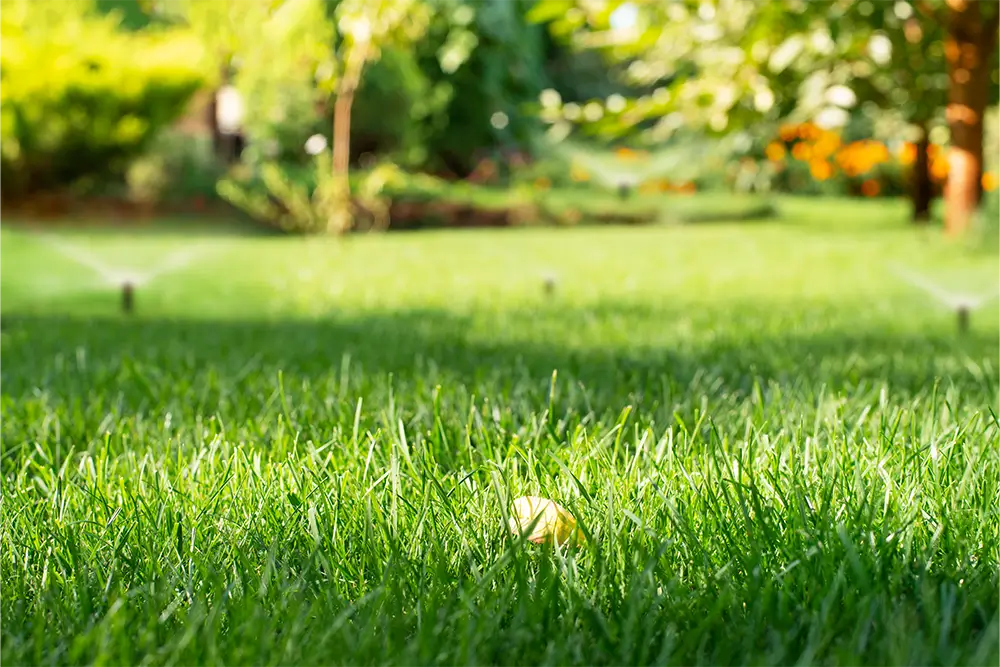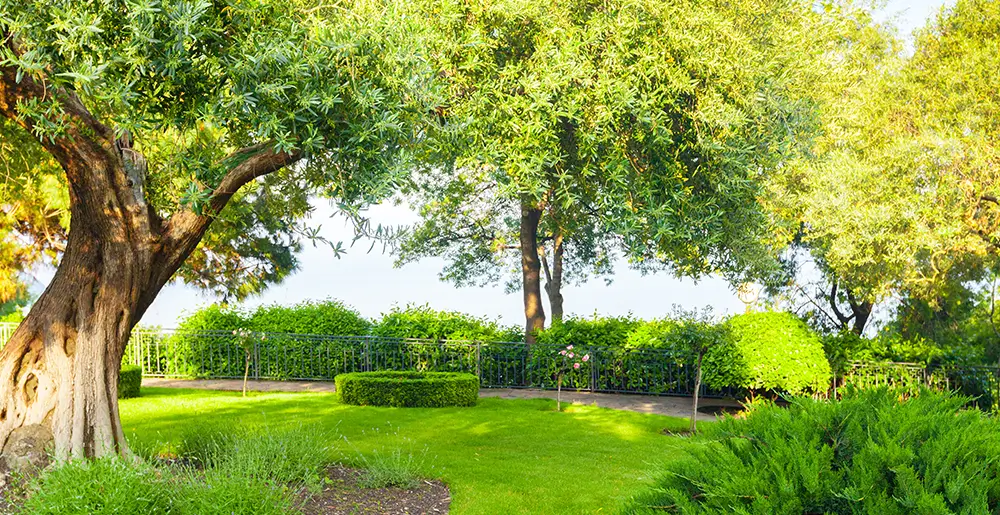
In landscaping, the concept of sustainability is gaining increasing importance. As environmental awareness grows, so does the need for eco-friendly landscaping practices. In this blog post, we’ll delve into the future of lawn care, exploring sustainable practices and innovative technologies to promote eco-friendly landscaping.
Understanding Eco-Friendly Landscaping
Eco-friendly landscaping encompasses principles aimed at reducing environmental impact while creating beautiful outdoor spaces. It emphasizes water conservation, biodiversity promotion, soil health enhancement, and energy efficiency. By prioritizing these aspects, eco-friendly landscaping seeks to minimize chemical usage and encourage natural solutions for maintaining lush lawns and vibrant landscapes.
Sustainable Lawn Care Practices
Water Conservation
Efficient irrigation techniques like drip irrigation and rainwater harvesting are crucial components of eco-friendly landscaping. Drip irrigation systems directly deliver water to the roots of plants, minimizing evaporation and runoff compared to conventional sprinkler systems. Rainwater harvesting requires collecting and storing rainwater for later use, decreasing the reliance on municipal water sources during dry periods
Moreover, incorporating smart irrigation technology can further enhance water conservation efforts. IoT-enabled sensors measure soil moisture levels and weather conditions in real time, allowing for precise adjustments to watering schedules. Automated irrigation controllers adjust watering times and durations based on environmental factors, ensuring optimal moisture levels for plant health while minimizing water waste.
Furthermore, selecting drought-tolerant grass species and implementing xeriscaping techniques can significantly reduce water consumption in landscaping. Xeriscaping involves designing landscapes that require minimal irrigation by using native plants, mulch, and efficient irrigation systems. By embracing water-efficient landscaping practices, homeowners can conserve water resources and reduce their environmental footprint.
Biodiversity Promotion
Promoting biodiversity in landscaping is essential for creating resilient ecosystems that sustain a wide variety of plant and animal species. Using native plants in the landscape design is a cornerstone of biodiversity promotion. Native plants are inherently adapted to the local climate and soil conditions, resulting in them being well-suited to flourish without the need for excessive watering or chemical inputs.
In addition to providing habitat and food sources for native wildlife, native plants contribute to the overall health of the ecosystem by supporting pollinators such as bees, butterflies, and birds. By creating pollinator-friendly habitats, homeowners can help combat pollinator decline and promote ecosystem resilience.
Furthermore, implementing habitat features such as bird feeders, bird baths, and nesting boxes can entice a range of bird species to the landscape. Birds have an essential role in controlling insect populations and dispersing seeds, further enhancing ecosystem diversity.
Soil Health Enhancement
Improving soil health is essential for maintaining healthy and resilient landscapes. Healthy soil provides a supportive environment for plant growth, helps retain moisture, and prevents erosion. Utilizing composting and organic soil amendments is a key strategy for enhancing soil health in landscaping.
Composting involves recycling organic waste materials like food scraps, yard waste, and leaves to produce nutrient-rich compost. Incorporating compost into the soil improves soil structure, increases microbial activity, and enhances nutrient availability to plants.
Moreover, reducing reliance on chemical fertilizers and pesticides helps preserve soil health and minimize environmental pollution. Organic fertilizers like compost tea, bone meal, and fish emulsion provide essential nutrients to plants without the harmful side effects of synthetic fertilizers.
Additionally, practicing soil conservation techniques such as mulching, cover cropping, and no-till gardening helps protect soil structure and minimize erosion. By prioritizing soil health in landscaping practices, homeowners can create thriving ecosystems that support healthy plant growth and biodiversity.
Energy Efficiency
Promoting energy efficiency in landscaping involves reducing energy consumption associated with lawn maintenance activities such as mowing, trimming, and irrigation. Exploring alternatives to traditional lawns, such as meadow-scaping or utilizing top quality, can significantly reduce the need for frequent mowing and maintenance.
Meadowscaping involves planting a diverse mix of native grasses, wildflowers, and ground covers to create a low-maintenance landscape that mimics natural prairie ecosystems. Meadows require minimal mowing and fertilization, making them a sustainable alternative to traditional turf grass lawns.
Furthermore, utilizing electric or battery-powered lawn equipment reduces carbon emissions and noise pollution compared to gas-powered equipment. Electric mowers, trimmers, and blowers offer comparable performance to their gas-powered counterparts while providing environmental benefits and reducing reliance on fossil fuels.
Moreover, incorporating energy-efficient lighting fixtures and solar-powered landscape lighting can further enhance energy efficiency in outdoor spaces. LED lighting consumes less energy and lasts longer than traditional incandescent bulbs, making it a cost-effective and environmentally friendly lighting option.
By prioritizing energy-efficient landscaping practices, homeowners can reduce their environmental footprint, lower utility costs, and create sustainable outdoor spaces that improve the beauty and functionality of their properties.

Innovations in Eco-Friendly Landscaping
Smart Irrigation Systems
IoT-enabled sensors and automated watering schedules allow for precise water management based on real-time weather and soil conditions. Smartphone apps provide homeowners with remote monitoring and control capabilities, optimizing water usage and promoting water conservation.
Sustainable Lawn Care Products
Bio-based fertilizers and natural weed control solutions offer effective alternatives to traditional chemical products. By harnessing the power of natural ingredients, these eco-friendly products provide safe and sustainable solutions for maintaining a healthy lawn.
Green Roof and Vertical Gardens
Utilizing rooftops and vertical spaces for greenery expands urban green space and provides numerous environmental benefits. Green roofs help reduce the heat island effect, improve air quality, and enhance biodiversity, making them an excellent option for eco-friendly landscaping in urban environments.
The Role of Technology in Sustainable Lawn Care
Advancements in lawn care robotics and autonomous mowers streamline maintenance tasks while reducing labour and resource requirements. Data-driven insights obtained through IoT devices and sensors enable homeowners to optimize lawn care practices, minimize resource usage, and promote sustainability.
Challenges and Opportunities in Adopting Eco-Friendly Landscaping Practices
Overcoming barriers such as initial costs and lack of awareness remains a challenge in the widespread adoption of eco-friendly landscaping practices. However, policy support and incentives can play a crucial role in promoting sustainable lawn care and encouraging homeowners to embrace eco-friendly landscaping for a greener future.
Incorporate Eco-Friendly Practices
The future of lawn care lies in embracing sustainable practices and leveraging innovative technologies to create eco-friendly landscapes. By prioritizing water conservation, biodiversity promotion, soil health enhancement, and energy efficiency, homeowners can contribute to environmental conservation while enjoying lush and vibrant outdoor spaces. Together, let’s pave the way for a more sustainable future through eco-friendly landscaping.
Having a healthy lawn and utilizing eco-friendly practices can substantially impact the environment. Be sure to look into the environmental benefits of our turf and contact us for any questions or to request a quote.